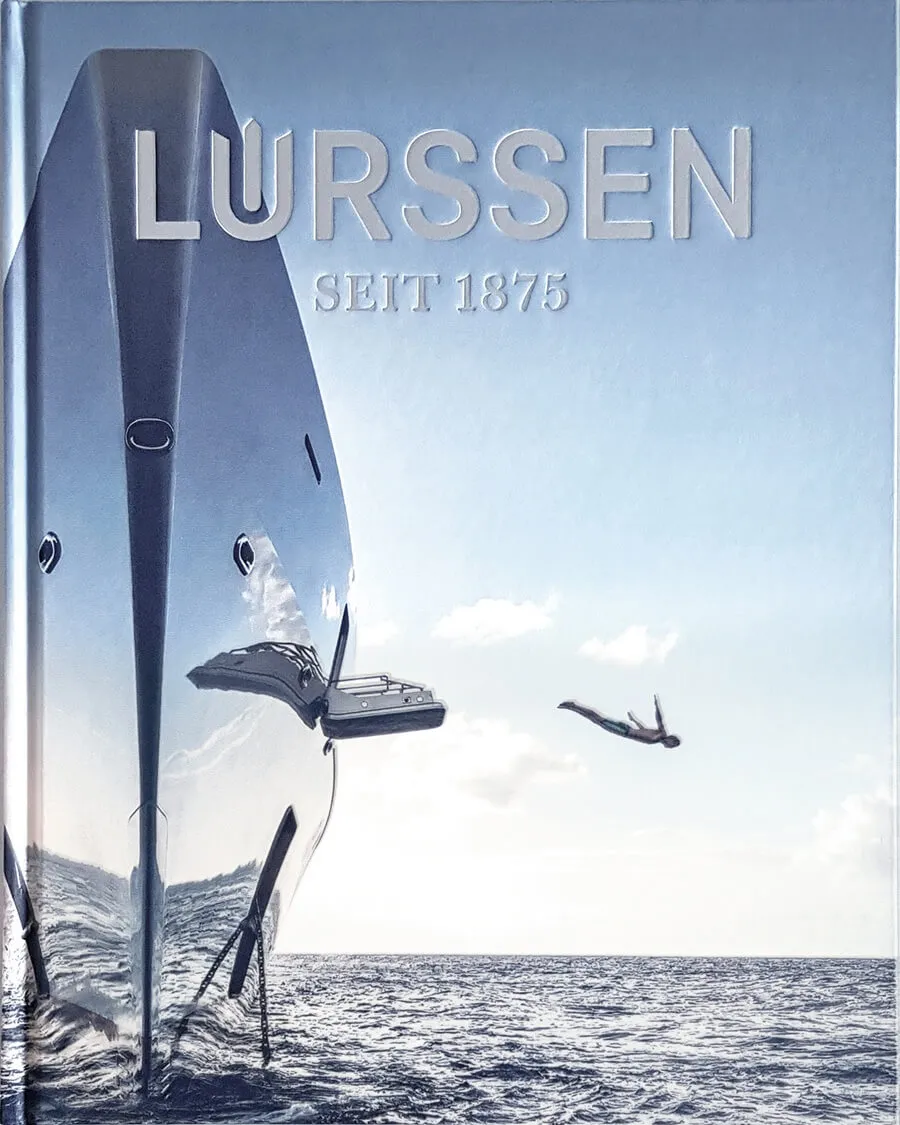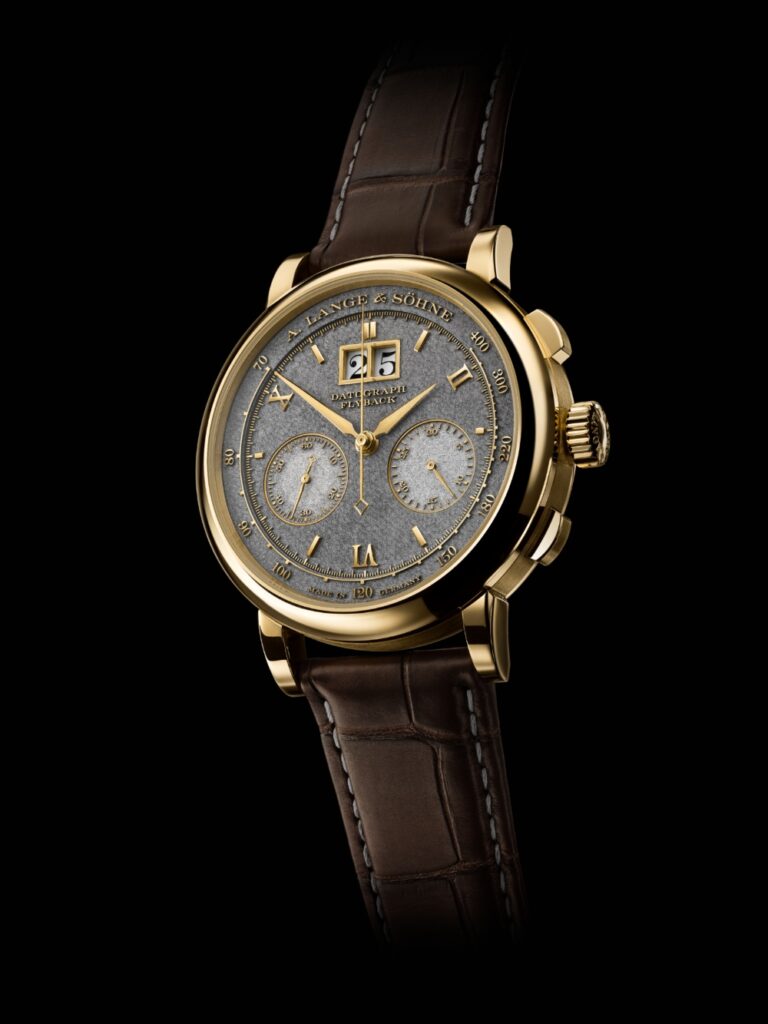History: Lürssen’s First 150 Years

Shipyards and superyacht owners tend to be aficionados of expensive, well-bound coffee table books. An artform in itself, Lürssen has published a second such tome to mark its first 150 years from 1875 to 2025, scheduled for release at Monaco Yacht Show this year.
An earlier 240-page private volume simply called Lürssen covers the period from 1875 to 2000, but so much has happened in the first quarter century of the new millennium that a broader sweep was thought necessary.
The renowned German yard has, in this period, firmly established itself as by far the world’s leading builder of very large superyachts, while retaining a strong presence in the 60-100m market, and
introducing new eco-fuels and eco-systems to power its fast-growing fleets of custom-designed vessels.

Surprisingly it is still family-owned. Rival Dutch yards like Van Lent, Rotterdam’s Oceanco, Heesen, Royal Huisman and Moonen have been sold to diverse investors, but Lürssen has instead acquired acclaimed yards like Blohm & Voss in the last decade, with its substantial facilities in Hamburg.
Fourth-generation Peter Lürssen quotes his founding forebear Friedrich Lürssen in the first book: “My firm shall be known as a leader in both quality and performance.”
Then he comments: “That’s what Friedrich said in 1875. It is still our policy today. We have remained, and will continue to remain, faithful to his promise. This shipyard is proud to have built ships, boats and yachts which have won praise throughout the entire world.”

Boat International says online that Lürssen built 14 of the current top 25 largest yachts in the world, although that magazine includes decidedly oddball entries like the classic El Mahrousa constructed in the mid-19th century and being kept afloat, allegedly, by the Egyptian Navy in Alexandria.
Wikipedia opts for 29 of the top 100 being Lürssens, and doubtless the Dutch digital site superyachttimes.com has updated figures, but we all agree that Azzam at 180.6m (Lürssen, 2013) leads the way, followed by Eclipse 162.5m (Blohm & Voss), Blue 160.6m (Lürssen), Dilbar 156m (Lürssen), Al Said 155m (Lürssen), A+ 147.7m (Lürssen), Prince Abdulaziz 147m (1984, one-off Danish yard), Opera 146.4m (Lürssen, 2023) and Dragonfly 142m (Lürssen, 2024).
Then come a brace of Italian Fincantieris, a yard that mostly produces cruise ships. Blue is a quite recent launch, and Dragonfly, one of the largest and most impressive yachts delivered last year, is a familiar name in the South Seas, where her predecessor played a welcome leading role in cyclone relief for remote islanders.

Another parameter arises here, as to whether ‘largest’ should mean length overall (LOA) or volume. By the latter yardstick, the latest Dilbar would be #1 and other contenders are long but comparatively narrow-beamed, thus have far smaller volume. Gross tonnage is another measure.
Next up in the #1 LOA spot is expected to be the 195m Rev Ocean designed by Espen Øino and being built in Norway, due for delivery in 2026. She is a kind of expedition ship with ocean ecology ventures in mind and potentially large groups of scientists aboard.
Lürssen has eight yards in Germany, but only three are used for superyachts, the rest being employed for naval and commercial ship construction, and refits and repairs. Some naval vessels for other countries are built under licence in those countries, but are still called Lürssens.

Whether these yards can all be kept profitably utilised is the obvious challenge, but Peter Lürssen has delivered detailed occasional lectures to the International Superyacht Society and other groups addressing precisely this topic, and his underlying message is clear. If a project doesn’t stack up financially from the outset, don’t do it, advice that not a few superyacht yards in the past quarter century may rue not having taken.
His own roots stem from the small towns of Lemwerder and Vegesack, which face each other across the River Weser, just outside Bremen CBD, and upriver of its principal port Bremerhaven in northern Germany.
Design Awards were a forte of the ISS, and America’s Showboats and Europe’s Yachts International began prestigious award schemes for such vessels. YI was bought in the Naughties by American interests, and its awards are continued today by Yachts France, while Boat International, also originally French-owned, was purchased by British shareholders, and has, relatively recently, started its own much-hyped awards.

In the very active 1990s Feadship, a combine of De Vries, Van Lent and naval architects De Voogt in the Netherlands, spent five years on the design and build of an innovative Double Haven for an Asia-based buyer, while one of Lürssen’s most striking contributions was the then-enormous 96m Limitless, delivered in 1997, which had the world’s first energy-efficient hybrid propulsion system aboard.
Two Caterpillar gensets, each of 2,680 horsepower, gave the ship a speed, via electric motors, of up to 17 knots, providing options distinct from those of the bigger diesels also fitted. The crew needed 19,000 pages of instructions on three CD-ROMs to fathom the hybrid concept and its uses.
Other deliveries in this decade included 59m Ronin built for a Japanese owner, 73m Coral Ocean currently being chartered as part of Australian Ian Malouf’s Ahoy Club, and the 139m Al Salamah.
Lürssen didn’t have a Yachts Division per se until 1988, when ebullient Malcolm Forbes of Forbes financial magazine started sailing around the world with Elizabeth Taylor on his Highlander IV, so the 1990s were still formative stages for private yacht sales and construction.

Michael Breman came across from Italian yard Baglietto as Sales Director, and Sylke auf dem Graben later arrived from Dutch superyacht yard Jongert and German superyacht dealer Herbert Dahm to handle media and related aspects.
Breman is the son of Dutch diplomatic parents, and during our first lunch in Vegesack he confided that he had been born in New Zealand, a fact that he was surprised I recalled in a subsequent piece decades later.
He is a bright, lively, knowledgeable and practical individual who fitted like a chameleon with Lürssen’s broadly-based clientele, and he and Peter Lürssen became famous for their parties in a national park during the Fort Lauderdale Boat Show.
Services such as foot massages were popular with invitees who had been walking around a boat show all day, but when they introduced Everglades alligator wrestling as another feature, and the alligators started winning, with ambulances called, the party program had to be tempered a little.
At first, we spent most time on the Lemwerder side of the river, only venturing to Vegesack to wine and dine via an irregular ferry service or car across a bridge upstream, but as Lürssen facilities grew on the Vegesack bank, this plus the enchanting little Havenhaus Hotel came more into focus.

Our account thus reaches the 2000-2025 additional span of the latest book. The 71m Skat and 97m Carinthia VII were both delivered in 2002, and the late Paul Allen’s 126 m Octopus the following year. A founder of Microsoft with Bill Gates, Allen did much ocean research in the South Seas before his untimely passing, cruising in both Micronesia and the Philippines archipelago.
The IT revolution was getting into full swing, and 115m Pelorus and 138m Rising Sun for Oracle’s Larry Ellison followed in short order. Pelorus was often parked in the Viaduct Basin in Auckland when the Kiwis defended the America’s Cup in 2000 and 2003.

Ellison had earlier taken line honours in the 1998 Sydney Hobart Race in the maxi Sayonara, with Lachlan Murdoch as one of his foredeck crew.
Lürssen delivered the stately 93m schooner Eos in 2006, and other notables included 155m Al Said in 2008 and 110m Al Raya the same year. The Middle East continued as a thriving market, backed by old and new money in Europe and America, stacks of nouveau riche Russians, and more emerging buyers in Asia-Pacific waters.

The Naughties was completed with 85m Pacific, 90m Phoenix 2 and 124m Katara. Rival firm Amels, run by the also family-owned Dutch firm Damen, had by now launched its Limited Editions idea, reducing delivery times for private superyachts pre-built on proven hulls and outfitted platforms, which required some investment, butLürssen stuck to its full custom strategy.
Stand-out Lürssen launches in 2010 to 2020 include 87m Ace, 147m Topaz, 180.6m Azzam, 86m Quattroelle, 85m Solange, 104m Quantum Blue, 95m Kismet, 156m Dilbar, 106m Amadea, 123m Al
Lusail, 85m Amatasia ex-Areti, 136m Crescent, 136m Flying Fox, 111m Tis, 98m Madsummer and 140m Scheherazade. Many of these vessels have Asia-Pacific connections.
In the last five years there has been the 142m Nord, 56m Moon Sand for an Asian owner, 115m Ahpo for an Asia-born owner, 160m Blue, 90m Norn, 146m Opera, 138.8m Luminance, 122m Kismet – the largest vessel at Monaco Yacht Show last year – for an Asian-American, 82m Haven and 142m Dragonfly.
Despite a setback because some but by no means all Russian owners have been ‘sanctioned’ due to Putin’s war on Ukraine, these measures are proving very expensive for would-be sanctioneers, and some cases are regarded as virtually unenforceable, so it is doubtful if they will cause more than a significant blip when viewed long-term, but the situation remains unsettled.
Apart from private yachts getting inexorably larger, as can be seen in Lürssen launches in the last quarter century, impressive technical and eco-innovations continue apace.
After the hybrid Limitless, by 2002 Lürssen was leading research into underwater exhaust systems, reducing back pressure and noise. Then, in 2005, it delivered the 90m Air, now Ice, which was the world’s first yacht with a pod drive. Four years later Lürssen introduced an advanced waste water system based on membrane technology, first used on the 60m Arkley, later called Caipirinha, and now standard on all its yachts. The 147m Topaz, now A+, was the first to feature a ballast water treatment system.
As part of its drive toward more responsible and sustainable solutions, Lürssen patented an innovative exhaust after-treatment system that reduces nitrous oxide emissions without affecting space, weight, noise or vibration. This has been standard on every Lürssen since 2016. It also launched Tesumo – a sustainable teak alternative – in 2020, which is now readily available in the industry, and was notably laid across the helideck of a recent vessel.

In 2026, Lürssen is delivering the 114m Cosmos, another immensely important breakthrough. The client has agreed to the research-installation of a methanol-powered fuel cell system. The methanol produces hydrogen, which is then converted into electricity.
This ground-breaking technology is intended to allow the yacht to remain effectively carbon neutral for up to 15 days at anchor and while cruising for 1,000 nautical miles at slow speeds. It has yet to be economically proved in some applications.
Comments Peter Lürssen: “It was my great grandfather who built the first motor boat in 1886, paving the way for yachting as we know it today. My dream is to ultimately build the first yacht without a combustion engine, marking the beginning of a new era for the industry.”

What better reason for the latest book? By the time 2050 rolls around, and the whole fleet is running on methanol or whatever else has evolved, with others following suit, a third volume will probably not be out of place.
Lürssen has produced 70 bespoke yachts since the Yachts Division was launched in 1988, with a total length exceeding 6,500m, and its own statistic is that Lürssen yards today have built 35 of the world’s top 100 yachts.
These include 180.6m Azzam as the longest, 156m Dilbar as the largest by volume, and 126m Octopus as the world’s first explorer yacht, thus starting yet another trend that opened a productive new period.
“We don’t set out to build the biggest yachts,” says Peter. “We set out to build the best yacht for each client. Clients choose us for our engineering excellence, our ability to think outside the box, and our determination to fulfil their wishes, no matter how unreachable they may seem.”

The owner of award-winning 122m Kismet, reviewed in Yacht Style Issue 80, concurs: “Lürssen’s position is simple. If you can conceive it, they can do it, no constraints. I love that. The shipyard hits every metric to perfection, especially with technology. The seaworthiness of Kismet is incredible, and I am awestruck by the spaces and workmanship.”
Every decade or so, Lürssen invites a small group of specialist media to Germany to contemplate latest initiatives. During the last one in 2018, which also allowed me to attend the nearby 50th anniversary of Sir Robin Knox-Johnston’s first solo, non-stop passage around the world in 1968-69, we had a look at the Rendsburg superyacht yard near the Danish border, and the huge Blohm & Voss facility in Hamburg now under Lürssen ownership.
But despite a few other outliers, the undoubted heartlands of Lürssen remained in that Lemwerder-Vegesack bend of the River Weser. On the final afternoon, gazing from my quaint little hotel room window at ships voyaging upriver toward Bremerhaven, it wasn’t hard to imagine the future that Peter Lürssen had in mind, nor the admirable drive and experience that should see it to fruition.
In addition to yard activities, Lürssen currently supports 30 global projects to protect vast swathes of our oceans, through the Blue Marine Foundation, and has recently launched the Lürssen Foundation to support talented engineers and invest in startups and other organisations making a positive impact on the industry and related endeavours. Long may such worthy efforts continue.
For more information visit yachts@lurssen.com, www.lurssen.com
This article was first seen on YACHT STYLE
For more on the latest in luxury yachting reads, click here.
The post History: Lürssen’s First 150 Years appeared first on LUXUO.






